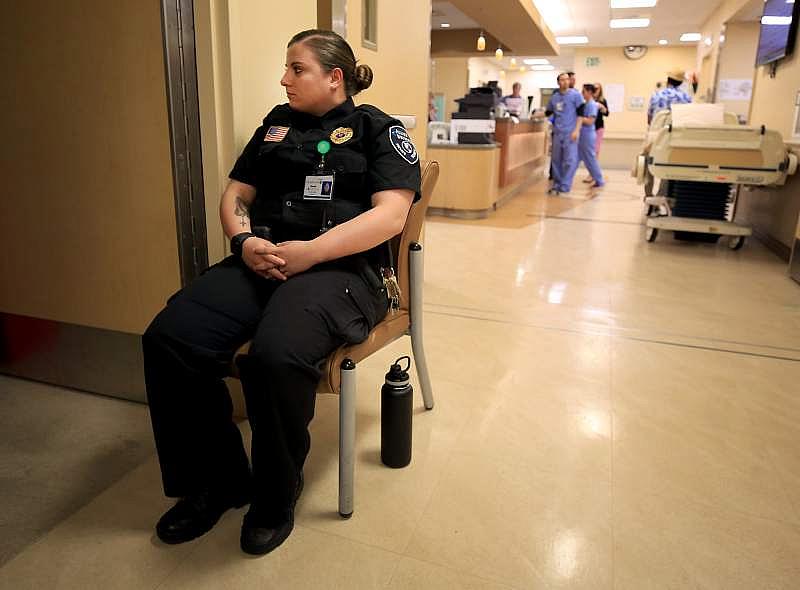Sonoma County struggles to fill gaps in crisis care for mentally ill
This report was produced as a project for the 2016 California Fellowship, a program of the Center for Health Journalism at the USC Annenberg School of Journalism.
Other stories in this series include:
Sonoma County reshapes approach to mental health care
Jail is largest psychiatric facility in Sonoma County
Sonoma County readers share their stories of mental health crisis

(Kent Porter / The Press Democrat)
When a psychiatric patient shows up at the emergency room at Santa Rosa Memorial Hospital, the staff quickly removes anything dangerous before placing them in a treatment room.
Cables and heavy objects are stowed away. A cart with essential instruments — scalpels, needles, sutures and commonly used drugs — is wheeled out.
“Anything that they could reach comes out of the room,” said Marirose Apolinarski, director of nursing in Memorial’s emergency department.
A “sitter” or security guard is placed near the doorway to watch over the patient 24 hours a day. If the patient can’t be managed with medication, they are restrained to prevent them from harming themselves or others.
This scene is repeated more than six times a day, on average, at Memorial — Sonoma County’s largest hospital — which logged nearly 2,500 encounters with psychiatric patients in its emergency department last year. Most will sit in an emergency room for hours, though their stays often turn to days, weeks, and in some cases even longer.
Their physical ailments, if they had any to begin with, are addressed promptly, but their mental health — their mood or personality disorder, neuroses or extreme psychosis — is left untreated. They wait in a kind of limbo for something in short supply for low-income residents in Sonoma County: a bed in a psychiatric hospital.
Increasingly, the burden of caring for people with severe mental illness is falling on local hospital emergency rooms and the county jail. Both are ill-equipped to handle the volume of mental health patients they are encountering, creating bottlenecks that are deeply and broadly felt by all residents, The Press Democrat found during a six-month review of Sonoma County’s psychiatric emergency services.
“Even if you don’t care about the human rights side of the issue, this is a hugely expensive and inefficient way to provide care,” said John Snook, executive director of the Treatment Advocacy Center, an Arlington, Virginia, nonprofit that works to eliminate barriers to treatment for people with severe mental illness.
Access to inpatient treatment is critical for people experiencing a severe mental illness, estimated at about 4 percent of the U.S. population — a figure that would equate to more than 20,000 people in Sonoma County.
But mental health beds for low-income residents have become much harder to find on the North Coast since the closure in Santa Rosa of two psychiatric hospitals, both shuttered 10 years ago for financial reasons.
Much has been done over the last half-century to break down the old institutional psychiatric treatment models that saw those with mental illness cast into state-run asylums indefinitely. The goal was laudable: to improve treatment by bringing those with mental illness into the fold of American society, into our communities.
Mental health advocates, however, agree that goal was never fully realized — and some argue it has in many ways harmed those with the most severe mental illnesses. Increasing resources for outpatient care has been accompanied by a reduction in the number of beds in hospitals that specialize in treating people that need it the most.
The Press Democrat review included an analysis of local hospital and jail data, a survey of state and national research on mental health, and interviews with dozens of people with mental illness and their family members, government officials, hospital administrators, jail commanders and local and national mental health advocates.
[This article was originally published by the Press Democrat.]
